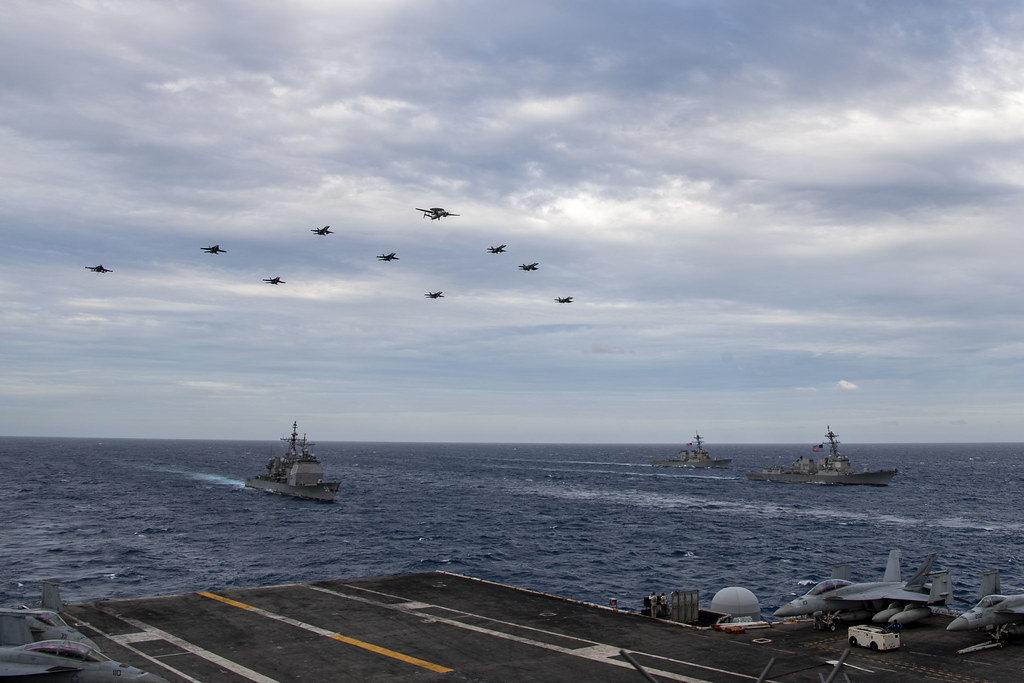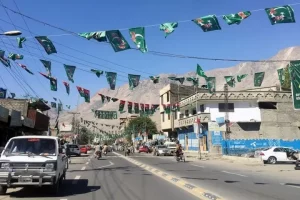Hours after new US President Joe Biden and Indian PM Narendra Modi renewed their support for a free and open Indo-Pacific and "a stronger regional architecture through the Quad" – a clear signal to counter China's muscle flexing in the region – two US aircraft carriers conducted joint operations in the contentious South China Sea on Tuesday.
The Theodore Roosevelt Carrier Strike Group conducted dual carrier operations with the Nimitz Carrier Strike Group in the South China Sea, said a US Navy statement today.
"The ships and aircraft of the two strike groups coordinated operations in a highly trafficked area to demonstrate the US Navy's ability to operate in challenging environments," it elaborated further.
As a part of dual carrier operations, the strike groups conducted a multitude of exercises aimed at increasing interoperability between assets as well as command and control capabilities.
The development indicates that there might be no change, as was widely expected after Biden replaced Donald Trump, in the US policy towards China.
"Training with Carrier Strike Group 11 in the South China Sea is a tremendously valuable opportunity," said Rear Adm. Doug Verissimo, commander, Carrier Strike Group (CSG) 9. "Through operations like this, we ensure that we are tactically proficient to meet the challenge of maintaining peace and we are able to continue to show our partners and allies in the region that we are committed to promoting a free and open Indo-Pacific."
CSG 9 and CSG 11 last conducted dual carrier operations June 21, 2020, in the Philippine Sea.
The last time the US conducted dual carrier operations in the South China Sea was in July 2020, when the Ronald Reagan and Nimitz carrier strike groups twice operated together in the South China Sea.
"Working cooperatively alongside Carrier Strike Group 9 improves our collective tactical skill while ensuring regional stability and security," said Rear Adm. Jim Kirk, commander, CSG 11. "We are committed to ensuring the lawful use of the sea that all nations enjoy under international law."
This exercise falls into a long history of the US Navy operating in the Indo-Pacific. Dual carrier operations, like this one, are not new and are intended to maintain US readiness and combat-credible forces to reassure allies and partners and preserve peace in the region.
CSG 9 consists of USS Theodore Roosevelt (CVN 71), Carrier Air Wing (CVW) 11, the Ticonderoga-class guided-missile cruiser USS Bunker Hill (CG 52), Destroyer Squadron 23, and the Arleigh Burke-class guided-missile destroyers USS Russell (DDG 59) and USS John Finn (DDG 113).
CSG 11 consists of the aircraft carrier USS Nimitz (CVN 68), Carrier Air Wing (CVW) 17, guided-missile cruiser USS Princeton (CG 59), the Arleigh Burke-class guided missile destroyer, USS Sterett (DDG 104), and Destroyer Squadron 9 and CSG 11 staffs. 7th Fleet is the U.S. Navy's largest forward-deployed fleet and employs 50 to 70 ships and submarines across the Western Pacific and Indian Oceans.
The 7th Fleet routinely operates and interacts with 35 maritime nations while conducting missions to preserve and protect a free and open Indo-Pacific region. USS Theodore Roosevelt departed San Diego for a scheduled deployment to the Indo-Pacific December 23 while USS Nimitz departed Bremerton, Wash., April 27 for COMPTUEX and deployment following an onboard restriction of movement period that began April 1.
The Theodore Roosevelt and Nimitz Carrier Strike Groups are on scheduled deployments to the 7th Fleet area of operations. As the US Navy's largest forward-deployed fleet, 7th Fleet routinely operates and interacts with 35 maritime nations while conducting missions to preserve and protect a free and open Indo-Pacific region.




















